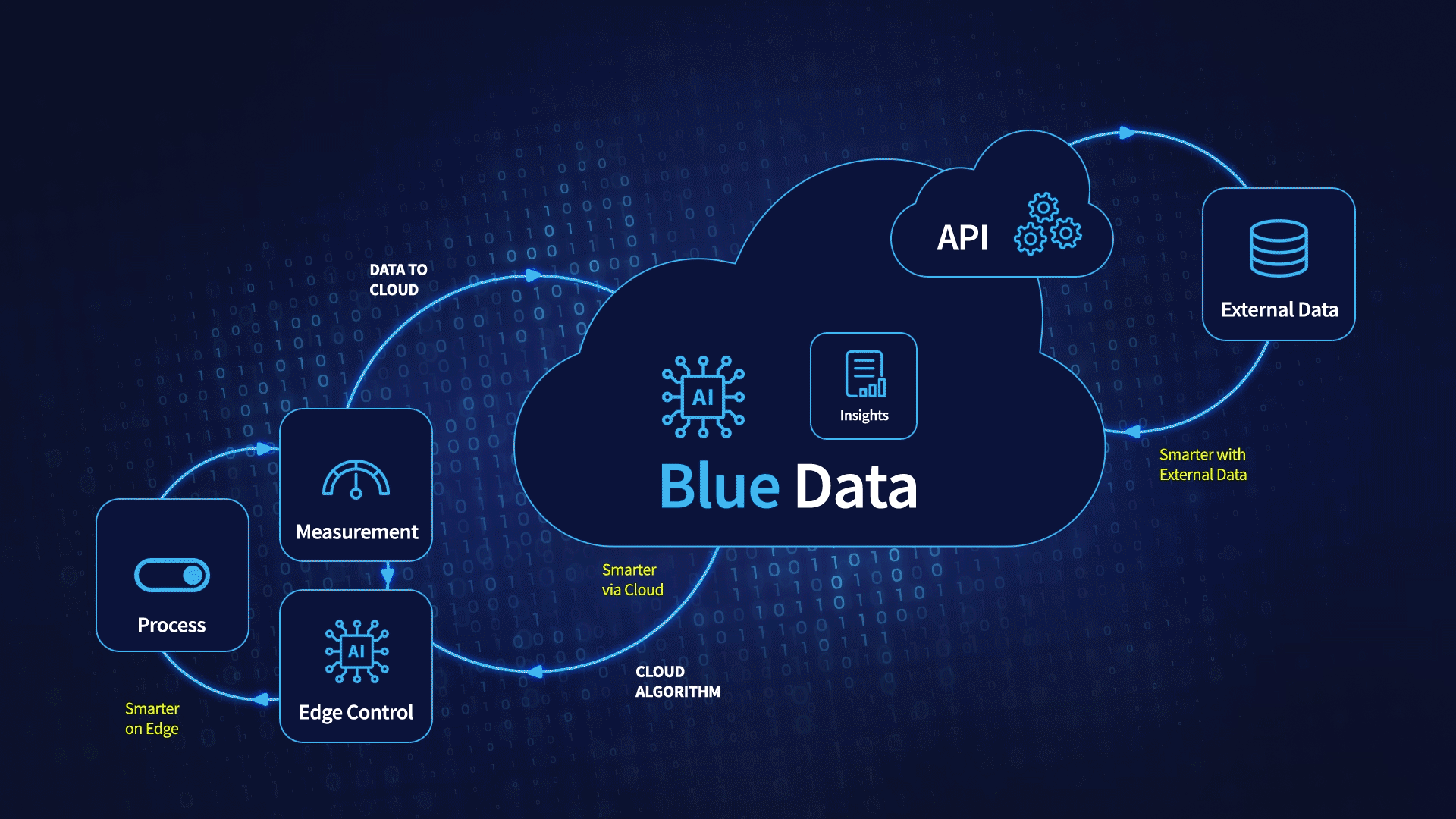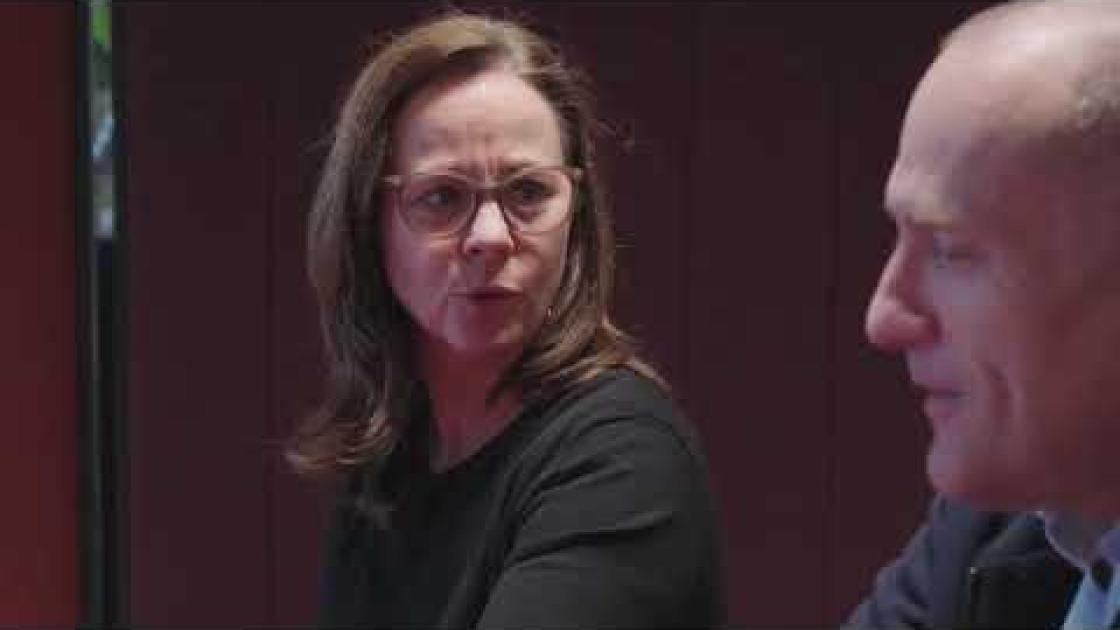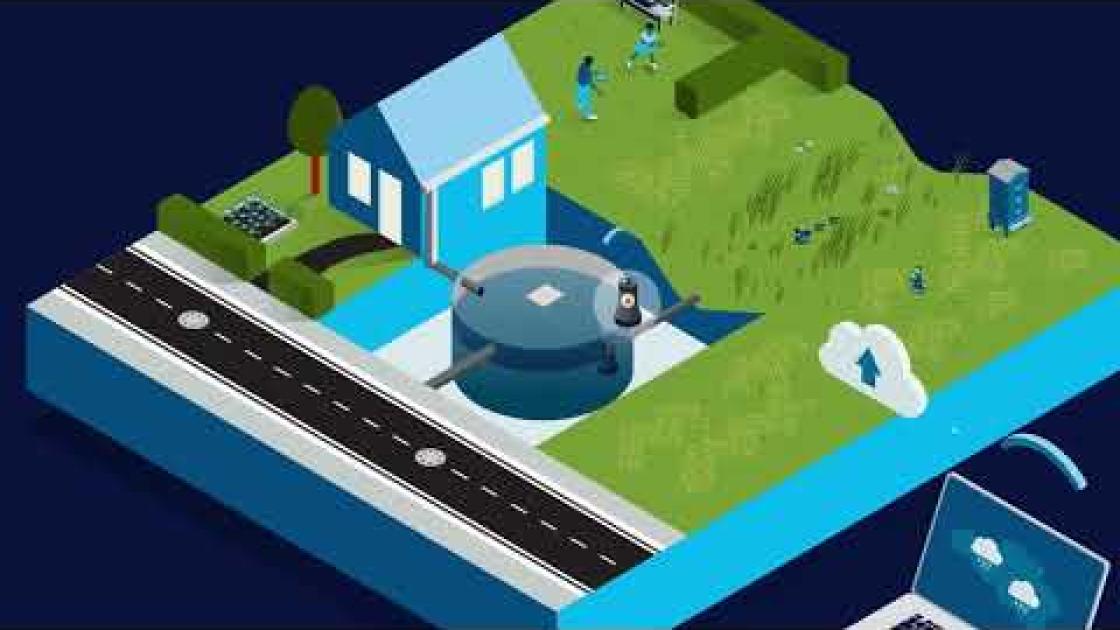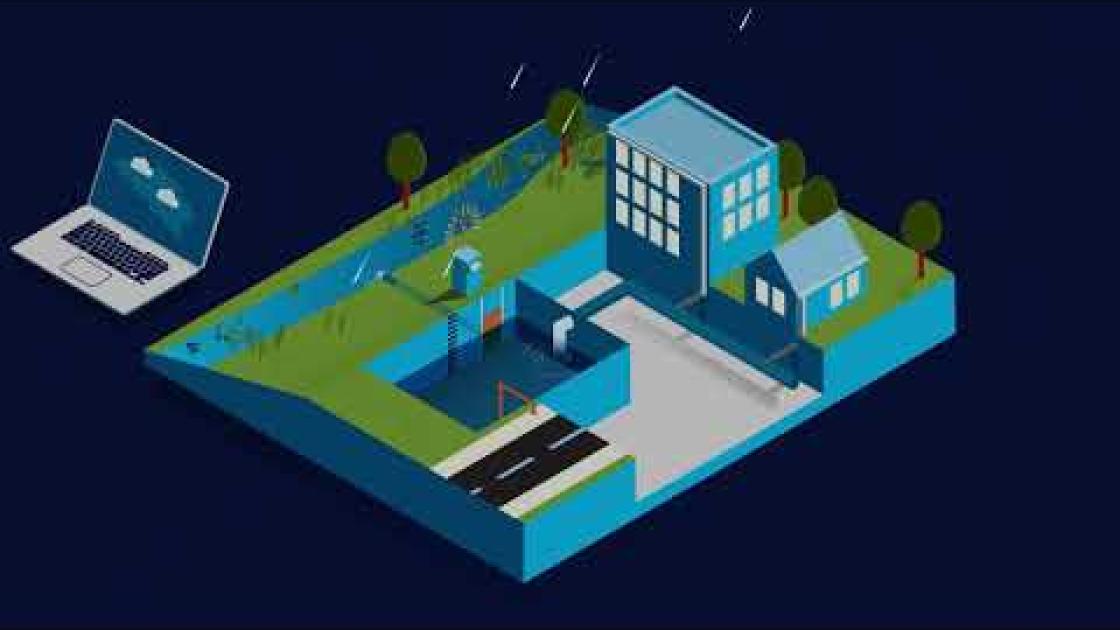Smart Grid, digital twin and smart automation in watertreatment
We design and develop a secure and scalable and proven automation (IoT) architecture and digital twin as an answer to several environmental challenges.
Digitalization at Aquafin
Transformation towards our new Bluedata cloud platform

A new agile Digital department
SmartGrid is part of a bigger ongoing digital transformation journey at Aquafin, starting 4 years ago. One of the key pillars in this journey has been the IT / OT convergence by creating a new Digital department where IT and OT expertise resides together, with a clear digital vision in hand to set the path.
Second pillar is the transformation towards a new agile Digital department, based on SAFe and supported with product teams (also in OT) with product owners and a portfolio sync board, consisting of business owners and c-level people.
Our new architecture
The heart of the new IOT architecture is what is called the “double feedback loop”, where the automation of the production process is done through 2 feedback loops.
- The first level is the classical PLC feedback loop on edge: this guarantees the robustness and stability of the automation.
- The second feedback loop is running in the cloud where smart (ML) algorihtms adds extra (artificial) intelligence for the local (edge) automation.
Field data via the SCADA system and IoT sensors are streamed to our Bluedata cloud platform; in the cloud smart algorithms feed extra PLC setpoints sent back to the local PLC automation, making it much smarter.
Doing so, we can anticipate on external data like weather forecasts or day-ahead electricity prices, and many more smart ways creating a better economical, ecological and energy consumption/production impact.

Use cases
Biogas engine acting as a smart battery
Aquafin operates about 20 biogas engines across Flanders. These engines run on biogas (a residue of the waste water treatment process, stored in a biogas balloon) producing electricity for own consumption or to be injected into the electricity grid. Using day-ahead electricity prices (received from Belpex/Elia), the biogas engine operates much smarter than before, with a economical benefit of 20K Euros per year per installation.
Internet of Water
This project, a cooperation between VITO, Vlakwa, imec, Aquafin, De Watergroep and VMM with support of VLAIO (Flanders Innovation & Entrepreneurship), investigated in depth the possibilities to monitor, continuously and in (near)realtime, water quality parameters based on online sensor measurements, in view of paving the way to a smart and robust water management for Flanders.
The intelligent control of the sewerage infrastructure does indeed have a significant impact. In addition to a positive effect on water quality and our environment by reducing overflows, smart controls enhance the safety and efficiency of the sewerage infrastructure.
Aquafin overflow platform
Aquafin Sets up a digital twin platform to collect real-time data from 1600 IoT overflow sensors, to implement operational alarms in case of overflow in combination with data from radar images of rainfall.
This animated video shows the working of this smart-driven infrastructure.
Smart-driven infrastructure: AqtiPut
In Flanders, we have the good habit of installing rainwater tanks on private property. The primary function of these tanks is the reuse of rainwater, but the sum of all these rainwater tanks together results in a significant buffering capacity. Aquafin equips hundreds of rainwater tanks with a sensor that can receive signals from the cloud. When heavy rain is predicted, the pumps in the tank are instructed to preemptively (partially) empty the rainwater tank. This frees up extra capacity in the smart rain tanks to capture the rainfall, reducing the burden on the sewer system. In this way, we minimize street flooding and overflows.
This animated video shows the working of this smart-driven infrastructure.
Smart-driven infrastructure: AqtiRain
Aquafin manages many large basins that temporarily store rainwater. The collected rainwater is then discharged directly into a nearby watercourse through an opening. However, we can better utilize this water. By placing a controlled gate in front of the opening, we can temporarily retain the rainwater. For example, municipal services and farmers, with the right agreements in place, can use the water. When heavy rain is expected, a signal is sent to the gate, causing it to open and allow the stored water to flow into the stream. This way, the necessary capacity is freed up in time to capture the rainfall and prevent street flooding.
This animated video shows the working of this smart-driven infrastructure.
Contact







